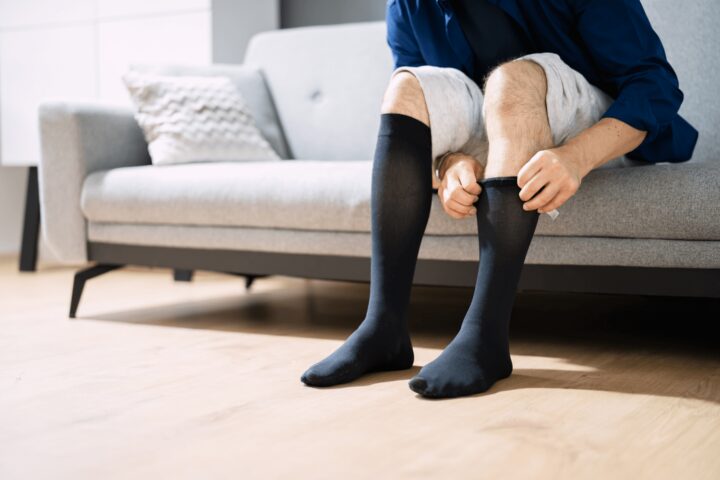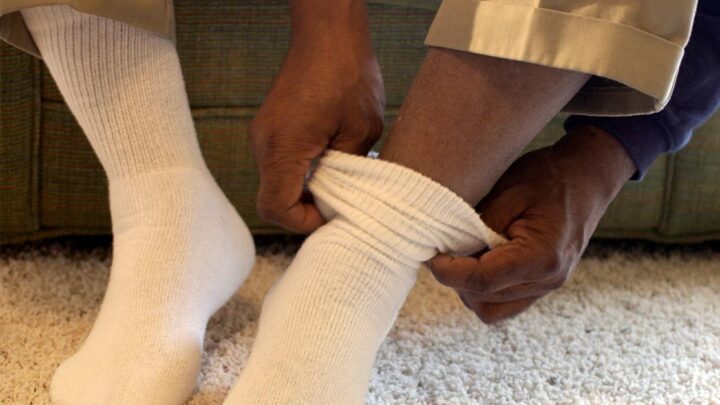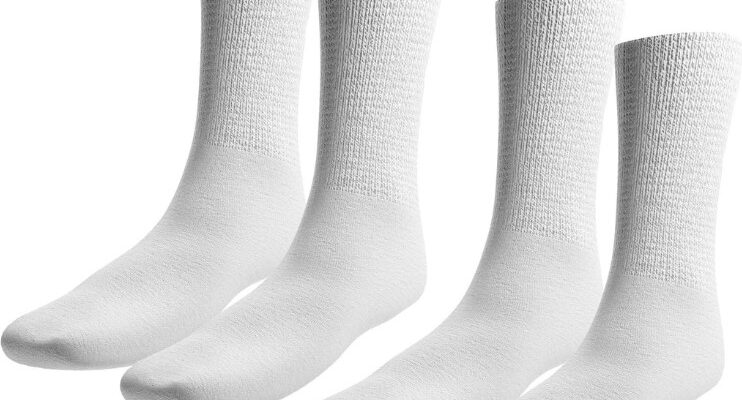Struggling with your diabetes? Do you want to take the necessary steps to ensure your health and well-being? You’re in the right place!
Here, you’ll learn essential information on how to properly use and care for diabetic socks for men. With this guidance, you can start taking charge of your life today!
What are Diabetic Socks and Why Wear Them?

Diabetic socks are specifically designed to provide extra protection, comfort, and circulation support for the feet of people with diabetes.
They are typically constructed of high-quality materials that wick away moisture, are made without elastic or seams that can pinch and rub, and feature non-compressing tops which allow better circulation. This ensures that the structure of your feet stays as comfortable as possible.
Diabetic socks are a great option for individuals with diabetes because they help reduce the risk of infection by controlling moisture in shoes and keeping feet dry. Additionally, they offer improved foot health maintenance by allowing air to circulate around the foot and prevent sweat from building up often caused by traditional dress or athletic socks.
Finally, wearing diabetic socks for men is recommended for individuals who experience any degree of neuropathy or circulatory issue since these specialty socks provide cushioning support for affected areas reducing discomfort caused by pressure points.
Types of Diabetic Socks
There are three major types of diabetic socks: compression stockings, seamless socks, and cushioning/therapeutic socks. Each type is designed to provide a different level of comfort and protection for people with diabetes.
Compression stockings offer graduated compression for improved circulation throughout the day. They are designed to provide full support from mid-calf down. Seamless socks provide extra warmth by protecting the calf from drafty areas of the shoe’s interior while ensuring breathability due to the lack of seams in their construction. Cushioning/therapeutic socks contain additional cushioning and padding in parts prone to rubber or skin irritations caused by rubbing shoes or footwear materials, such as foam cushion insoles in arch areas of feet and ankles.
Benefits of Wearing Diabetic Socks

The benefits of wearing diabetic socks include:
-Preserve foot health. Wearing diabetes socks helps protect your feet from moisture and temperature changes. It keeps feet dry by wicking away any excess moisture, reducing the risk of fungal infections and blisters. They also help prevent cross-contamination from bacteria from bedding or outdoor surfaces.
-Increases efficiency of blood flow in feet. By providing a snugger fit than regular socks without inhibiting movement, diabetic socks ensure more efficient circulation throughout your feet – which is especially beneficial for those with diabetes who are at risk for lower circulation due to nerve damage or poor blood sugar control.
-Improves comfort for diabetic feet. The extra cushioning on the sole of the foot offers surprise comfort by taking off pressure points with its nonrestrictive quality while still allowing you to move freely in your shoes since these types of socks are seamless and don’t bunch up like traditional ones do when worn during activity or all day long wear.
How to Properly Wear Them
Once the right pair of diabetic socks is chosen, proper care for them must become routine. In order for them to last long and keep feet healthy, avoid using fabric softeners or bleach when washing as this can damage the fibers in the material. Additionally, allow them to air dry completely with no direct heat before wearing or storing them away – excessive heat can create irreversible damage to the material as well.
It is imperative that they fit properly: make sure that the elastic on top isn’t too tight and not so loose that they slip off the feet during wear; additionally, too much compression can restrict blood flow while loose socks will not offer sufficient control of moisture build-up which increases the risk for inflammation and infection in those prone to these conditions. Finally, make sure you get your foot measurements taken professionally at least once every six months as this will ensure you always have the best fit for your sensitive needs!
Care and Maintenance

With proper cleaning and maintenance, this type of sock can remain comfortable, breathable, and durable. Here are some tips to help keep your socks in excellent condition:
- Wash them after every use using a gentle detergent to ensure that oils, dirt, and bacteria do not build up on the fibers.
- Air drying the socks is recommended since machine drying will deplete their original shape, size, and elasticity more quickly.
- Never bleach them; this will damage the fibers, making them more brittle and reducing bagging or sagging over time due to reduced elastane content in the fabric composite.
- It is important to rotate between different pairs of diabetic socks each day in order to prevent skin irritation or damage from occurring from constantly wearing the same pair of socks for too long a period of time each day.
- Inspect your diabetic sock for any signs of wear before putting them on as frayed threads or small holes can indicate that they need mending or replacing with a new pair immediately in order to avoid tearing or other injury risks which can occur when putting them on over bare skin with small snags present on them already prior to wearing them daily.
The Benefits of Wearing Diabetic Socks
The benefits of wearing diabetic socks are numerous. Not only are they designed to keep feet comfortable, but they also promote proper circulation and reduce the risk of a person with diabetes experiencing skin problems on their feet.
Properly caring for diabetic socks is essential in order to get the most from them. This includes washing them after every use, wearing them only as part of your regular daily routine, and making sure that you purchase the right size for yourself. Additionally, regular foot exams and daily inspections for any signs of irritation or potential harm can help to ensure healthy feet.




